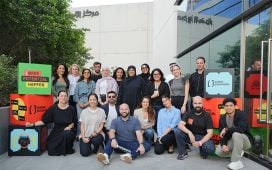In our digital age, attention is increasingly becoming a valuable commodity. Social media platforms, advertising, and content creation all compete for people’s attention.
While technology has facilitated connections in many ways, there’s also a recognition of its limitations in fostering genuine intimacy.
The shift from attention to intimacy reflects society’s needs for more meaningful connections in an increasingly digital and fast-paced world.
Rebecca Bezzina, CEO EMEA at R/GA and Nicholas Pringle, Chief Creative Officer at R/GA EMEA spoke to Campaign Middle East at Dubai Lynx about developing new brand experiences through the use of Generative AI.
What do you think brand
To continue reading this article you need to be registered with Campaign. Registration is free and only takes a minute. Register Now or sign in below if you already have an account.
Tags:R/GA









